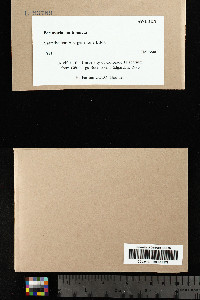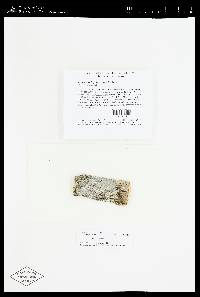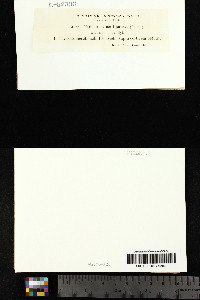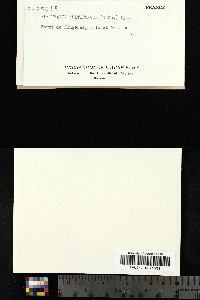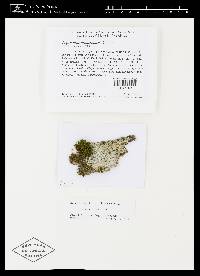
- Home
- Search
- Images
- Species Checklists
- US States: O-Z >
- US National Parks
- Central America
- South America
- US National Parks
- Southern Subpolar Region
|
Lepra multipunctoides (Dibben) Lendemer & R.C. Harris
 (redirected from: Pertusaria multipunctoides Dibben) (redirected from: Pertusaria multipunctoides Dibben) |
|
|
Family: Ochrolechiaceae
[Pertusaria multipunctoides Dibben, moreVariolaria multipunctoides (Dibben) Lendemer, Hodk. & R.C. Harris] |
MB#821150 TYPE. UNITED STATES, NORTH CAROLINA, Haywood County, Harmond Den Wildlife Area off I-40 in Pisgah National Forest. Cold Springs Creek, on trunk of Liquidambar, M.J. Dibben 22435 (DUKE 130691, holotype; US 00069144, isotype). Description. Life form: Lichenized fungus. Thallus crustose, episubstratal, thin to thick, gray-green, margin entire and zoned, pale. Surface smooth to verrucose, continuous to rimose-areolate. Ascomata pertusaroid apothecia (1-4 in thalline warts), fertile warts 2-5 mm diam., 0.2-1.5 mm tall; Disk dark brown or black, level, initially white pruinose to sorediate, flat to hemispherical, wart margins eroded. Epithecium pale to dark-brown; hymenium hyaline to yellow-brown; hypothecium hyaline to pale. Asci clavate, 100-210 x 35-80 um, 1-spored. Ascospores cylindric, 55-195 x 20-70 µm, single walled, smooth. Pycnidia present; conidia 6-10 x 025-1.0 um Chemistry. Cortex spot tests negative, UV-; medulla and soredia K+ brownish, KC-, C−, P+ orange-red; soredia; protocetraric and furmarprotocetraric acids. Substrate and Habitat. Corticolous on hardwoods, less on conifers, infrequently saxicolous. Distribution. East Asia (South Korea), North America; in North Carolina throughout. Literature Dibben, M.J. (1980) The chemosystematics of the Lichen Genus Pertusaria in North America North of Mexico. Publications in Biology and Geology No. 5, Milwaukee Public Museum Press, Milwaukee. 162 pp. Park J.S., S.Y. Park, C.H. Park, S.Y. Kondratyuk, S.O. SO & J.S. Hur. (2017) Taxonomic Revision of the Lichen Genera Pertusaria, Varicellaria, and Variolaria (Pertusariales, Ascomycota) in South Korea. Mycobiology 45(4): 270-285. |
|
|
|











